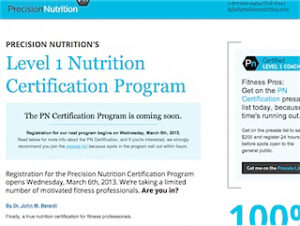
This was a very rewarding experiment in a couple of ways. Firstly, it clearly demonstrated just how effective the ‘30 day‘ approach is (there are a lot of life changes you can make if you tell yourself it’s only for a month – and by then you may not wish to change back); secondly it threw quite a bit of light on the notion of biphasic sleeping. Here are a few things I discovered during that time.
The 90 minute sleep cycle
I’ve gone from a skeptic to a true believer on this one. The idea that in quality sleep the cycles are around 1.5 hours in length not only seems plausible, but highly likely. Think back to the last really good night’s sleep you had (woke up feeling refreshed, ready to take on the day) chances are it was a multiple of 1.5 hours (4.5, 6, 7.5 and 9 hours are all quite common). By forcing myself to adapt to multiples of this, I had more feelings of ‘that was a good night’s sleep‘ than usual.
Adaptation period
It took around a week to adapt to the new structure, which was/is:
- a 90 nap starting around 19:00 (this time varies slightly according to how tired I feel on the day)
- a longer sleep of 4.5 hours starting around 02:00
In total that’s 6 hours per day, or 42 hours per week (giving me a 14 hour bonus on a typical 7 x 8 hour week).
There are a few things to be aware of with the length of this adaptation period. The first is to watch your caffeine intake. Now, I’m certainly not going to be hypocritical enough to suggest that you give it away altogether (I’m enjoying a cup of coffee whilst writing this); however I would suggest that having three double espressos 30 minutes before a nap is a bit much. Use your judgement.
The second is sugar intake. As with coffee, use your common sense. A bit of maltodextrin in a shake certainly isn’t going to kill you, but try to stay away from the jam doughnuts.
The third consideration – perhaps related to the previous two – is the stress factor. If you come home from work every day fired up about something-or-other, don’t take your nap immediately afterward. The best routine (for me) seems to be work -> workout -> eat -> sleep. There’s nothing like throwing a bit of iron around to help alleviate stress.
Impact on strength training
It has to be said that I seem to favour the frequent, short workout approach – a few sets of rack pulls there, a few sets of floor presses there. Rare is the day which doesn’t include some form of strength training.
My routine was like this prior to the start of biphasic sleeping, and doesn’t seem to have been affected at all by it. I was fortunate enough to avoid serious injury throughout the period of the test, and there doesn’t appear to have been any impact on recovery. DOMS still rears its ugly head occasionally. The thought of an ice bath still feels me with dread.
Productivity
There are two major considerations here. The first is that the periods just prior to and just following sleep are always less productive. Think for a minute of all of the projects you’ve completed 2 minutes after waking up, or when you’re about to attain ‘qwertyface‘ (passing out through tiredness at the computer). These periods vary from person to person and day to day, but around 15-20 minutes seems pretty typical.
Biphasic sleeping doubles the number of these periods. This means that instead of 30-40 unproductive minutes per day you now have 60-80. However, you’ve gained – for an 8-hour-per-day sleeper – 2 hours per day. An extra hour of productive time per day? I’ll take that more than happily.
The second consideration is the quality of that productive time. This is where it becomes difficult to state just how much more productive I feel than a month ago (although the quantity of articles written for this and other sites is probably a good indicator); particularly as I’ve been intentionally monitoring my productivity for a few weeks now. That monitoring in itself provides a productivity boost (nobody wants to write down ‘30 minutes just surfing the internet, reading emails and generally slacking off‘).
More refreshing
Together with the productivity change in the difficult-to-measure department is the improvement in the refreshing quality of sleep. Aside from a few days (with a known cause of poor sleep) and the adaptation period – which was always expected – I’ve had more ‘leap out of bed, ready to face the day‘ mornings than usual. As irritatingly happy as that may sound (particularly if you’re reading this over your morning cup of coffee), it makes a tremendous difference in the way the day’s problems are faced and resolved.
Dreams
I was pleasantly surprised that a 90 minute cycle included the deep sleep and dream recall that occasionally accompanies a 7.5 hour night. This dream recall didn’t really begin until I was past the adaptation phase, and was able to wake up naturally just before the alarm went off.
If you’re not used to remembering your dreams, this may not seem like much of a benefit; however the dream recall is usually associated with feeling refreshed, which is an obvious benefit for everyone.
On vs In
The cause of the poor sleep mentioned above – at least a major contributor – was a change to the routine of ‘on vs in’. Usually I simply kick my shoes off and lie down on a bed, couch, poolside lounge (OK, wishful thinking for that last one) when it comes time for the 90 minute nap. For the main sleep period of 4.5 hours I go to the trouble of switching out the lights and climbing into bed – often waking up naturally just prior to the alarm sounding.
The poor sleep (and associated zombie status) was largely a result of climbing into bed on both occasions (hey, it was cold). Once I realised the cause and reinstated the on vs in distinction, quality sleeping resumed.
The bad side
As with any change to a schedule, there are negatives. These seem comparatively minor to me; although their impact will obviously vary from person to person.
They are :
You may have less time to spend with your partner/spouse.
Biphasic sleeping simply refers to getting your daily requirement in two chunks, rather than at specific times. However, If you choose to try biphasic sleep while your partner/spouse is on monophasic sleep (a solid block of sleep, as most people try to get) you will find that at some point each day you will be asleep while they are awake, and vice versa. If you happen to be able to schedule things so that you sleep whilst they work, great. If not, this may be a downside.
You’ll be tired during the adaptation period.
There’s no way around it. For the first week or so, you’ll be more tired than usual (it’s a lot like being jetlagged) while your body gets used to the new routine. If you don’t wish to – or can’t realistically with your current schedule – go through this, it may be a downside. For me, this was a known change with a potentially great benefit at the end of it.
Who would benefit from biphasic sleep
Just about everyone. The positives far outweigh the negatives (at least for me), and there are a couple of cases where the positives may seem a little more, well, positive. They are :
As Kris – who’s been trying out biphasic sleeping himself lately – pointed out, parents of young children can benefit. If your young son/daughter routinely takes an afternoon nap, taking one yourself (while you have a chance) isn’t a bad idea at all.
The other situation that Kris mentioned is that for those with back pain, a single period of uninterrupted sleep may result in stiffness and pain. A rather undesirable coupling at the best of times; alleviated in part by breaking up your sleep into two (biphasic) or more (polyphasic) periods. After all, the less time spent lying in one position, the better.
Changes I would make
When I started doing this, my idea was to have a 1.5 hour nap and a 3 hour main sleep period. This proved to be a little under what my body required, and I switched to a 3/4.5 hour split (3 hours by default, 4.5 on workout days). Once again this didn’t feel like quite enough, and I changed to a regular 1.5 hour nap followed by a 4.5 hour sleep (every day). This feels right.
I say this to demonstrate that making small changes can be of benefit, and I’ll continue to make them as required. As the volume of weight training increases (as it almost certainly will), as I age and as my life situation in general changes; the length of the main sleep period will change.
I’ll also be keeping a more accurate record of my dreams (particularly now that I’m well past the adaptation point, and dream recall is becoming far more frequent); more for personal interest than anything else. I’ve no doubt that there is some meaning in there, but I don’t believe we’re anywhere near finding out what that is.
The third and final change I may make in the future is to adjust the timing of the nap. A 7pm-ish start suits my current schedule, but this may change. Whatever the starting time becomes, the length of 90 minutes is not likely to change.
Summary
Overall, I love it. As with any change, there are teething problems and the odd case of fine tuning. However, the benefits of biphasic sleeping far outweigh the negatives (in my case) and I’ll stick with it. If, like me, you have a somewhat skeptical nature, give it a try. You won’t be disappointed.
NB: If you’ve missed the brief notes for a particular day of the experiment, you’ll find links to them listed below. Sleep well.
Biphasic Sleep: Day 1
Biphasic Sleep: Day 2
Biphasic Sleep: Day 3
Biphasic Sleep: Day 4
Biphasic Sleep: Day 5
Biphasic Sleep: Day 6
Biphasic Sleep: Day 7
Biphasic Sleep: Day 8
Biphasic Sleep: Day 9
Biphasic Sleep: Day 10
Biphasic Sleep: Day 11
Biphasic Sleep: Day 12
Biphasic Sleep: Day 13
Biphasic Sleep: Day 14
Biphasic Sleep: Day 15
Biphasic Sleep: Day 16
Biphasic Sleep: Day 17
Biphasic Sleep: Day 18
Biphasic Sleep: Day 19
Biphasic Sleep: Day 20
Biphasic Sleep: Day 21
Biphasic Sleep: Day 22
Biphasic Sleep: Day 23
Biphasic Sleep: Day 24
Biphasic Sleep: Day 25
Biphasic Sleep: Day 26
Biphasic Sleep: Day 27
Biphasic Sleep: Day 28
Biphasic Sleep: Day 29
Biphasic Sleep: Day 30











0 Comments